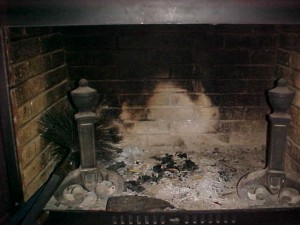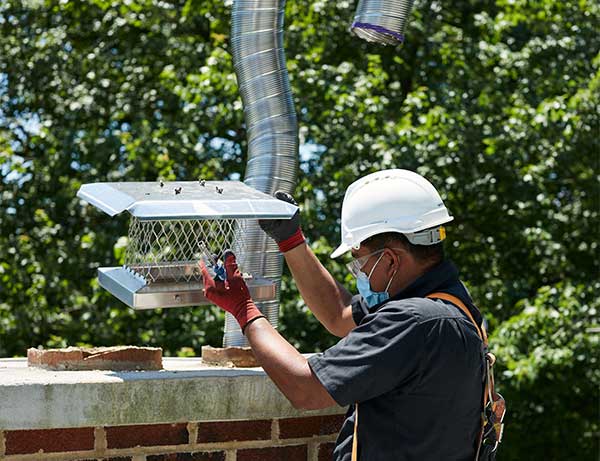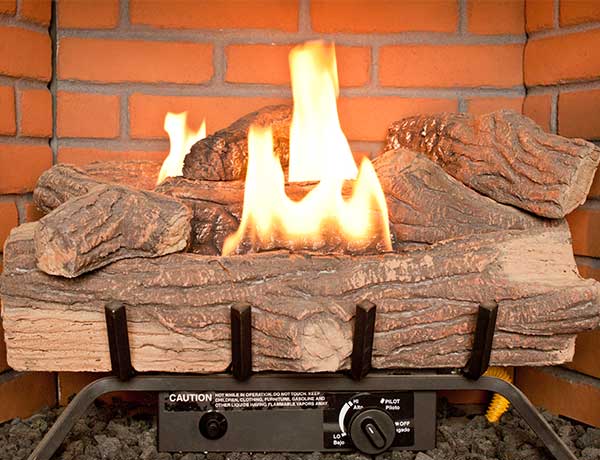 The fireplace in your home has served you faithfully over the years. In the snowy east coast winter months, it may heat your home or provide that special ambiance on a snowy night spent inside. On holidays or other special occasions, the quiet crackling fire in the background only adds to the joyous atmosphere. In return for everything your fireplace does for you, you have it cleaned regularly to ensure a long-lasting fireplace and chimney. Recently, however, you may have noticed an unpleasant smell coming from your chimney, particularly during a hot, humid summer, on a rainy day or when the air conditioning runs. The regular chimney sweeps don’t seem to improve the problem, but there is a solution.
The fireplace in your home has served you faithfully over the years. In the snowy east coast winter months, it may heat your home or provide that special ambiance on a snowy night spent inside. On holidays or other special occasions, the quiet crackling fire in the background only adds to the joyous atmosphere. In return for everything your fireplace does for you, you have it cleaned regularly to ensure a long-lasting fireplace and chimney. Recently, however, you may have noticed an unpleasant smell coming from your chimney, particularly during a hot, humid summer, on a rainy day or when the air conditioning runs. The regular chimney sweeps don’t seem to improve the problem, but there is a solution.
Why Does My Fireplace Smell?
When wood burns, it creates a natural compound called creosote. As this tar-like material travels up your chimney, some of it clings to the chimney walls. Over time, the creosote seeps into the masonry of your chimney – the same reason why your fireplace turns black over time. When a chimney specialist sweeps your chimney every year, the creosote on the surface of the chimney wall is removed, but nothing can be done to extract the creosote from the pores of the masonry.
 The smell you notice in your home comes from the creosote in the chimney and it may take on a musty smell or a stale fire smell. Because the creosote is trapped in the masonry of your chimney, so is the smell. Fortunately, the smell only enters the home when outside air flows from down through the chimney. This often occurs on hot, humid days, when it rains outside, or if the air conditioning runs, and the process is called negative pressure. You may think that closing your damper will prevent the stale air from entering your home, but oftentimes the damper in your fireplace is too damaged or outdated to properly shut off the air flow.
The smell you notice in your home comes from the creosote in the chimney and it may take on a musty smell or a stale fire smell. Because the creosote is trapped in the masonry of your chimney, so is the smell. Fortunately, the smell only enters the home when outside air flows from down through the chimney. This often occurs on hot, humid days, when it rains outside, or if the air conditioning runs, and the process is called negative pressure. You may think that closing your damper will prevent the stale air from entering your home, but oftentimes the damper in your fireplace is too damaged or outdated to properly shut off the air flow.
How Can I Stop The Smell?
The musty odor that invades your home can be extremely frustrating, but luckily, you have an option. Most older fireplaces have a damper called a throat damper that sits just above the fireplace inside the chimney. Although these dampers are efficient at keeping air out of the home when closed, an old, damaged throat damper can be expensive to replace. Instead, many homeowners opt to replace their throat damper with another type of damper called a top-seal damper.
A top-seal damper sits near the top of the chimney and is virtually air-tight. In addition to eliminating unwanted airflow, these rubber lined dampers also keep out rain, birds and insects. Compared to the high cost of replacing an outdated throat damper, installing a top-seal damper can cost less than $600.
How Do I Have a New Damper Installed?
Understandably, you want the smell in your fireplace remedied as soon as possible by having a top-seal damper installed. If you live in the D.C area, including nearby towns in Maryland and Virginia, contact Winston’s Chimney Service for a professional consultation.



